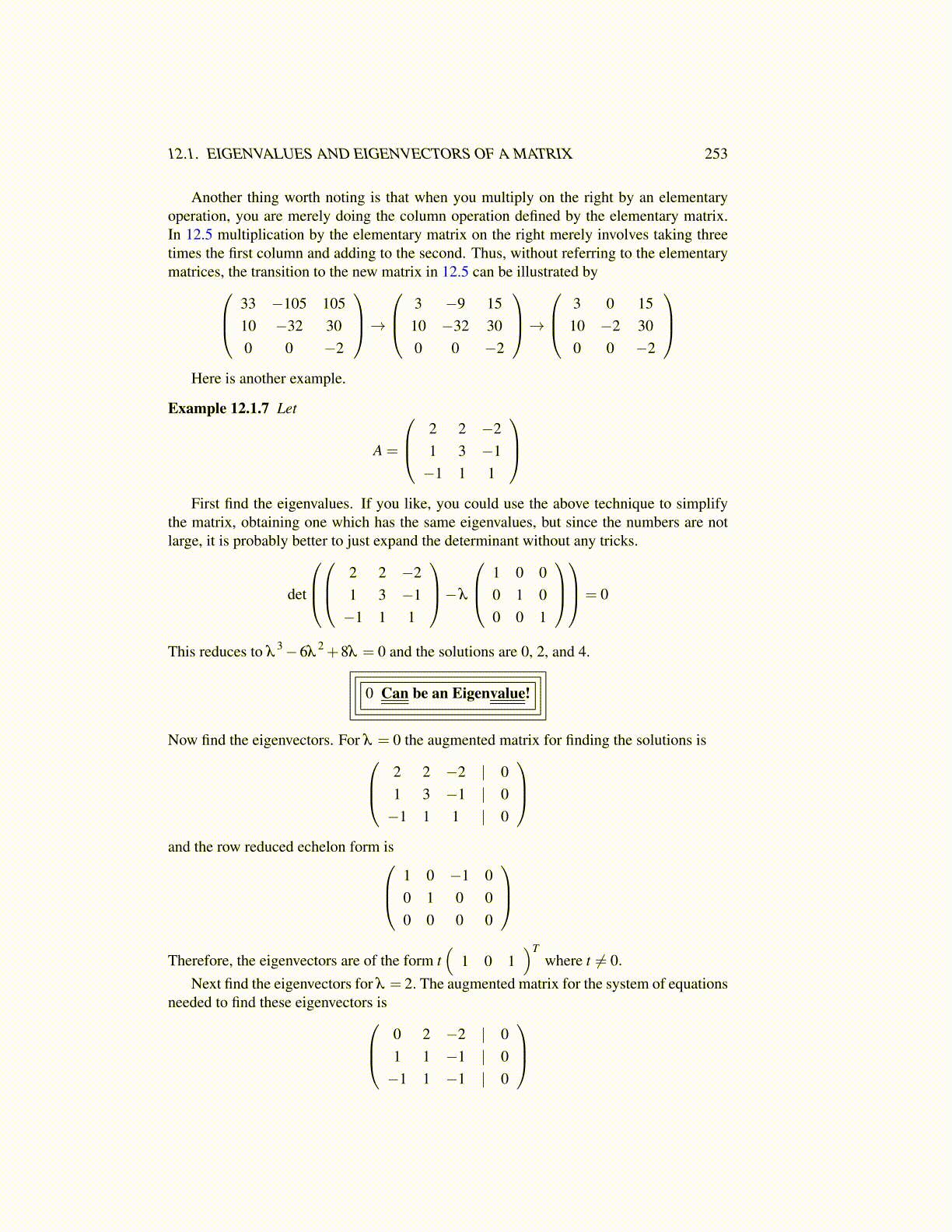
12.1. EIGENVALUES AND EIGENVECTORS OF A MATRIX 253
Another thing worth noting is that when you multiply on the right by an elementaryoperation, you are merely doing the column operation defined by the elementary matrix.In 12.5 multiplication by the elementary matrix on the right merely involves taking threetimes the first column and adding to the second. Thus, without referring to the elementarymatrices, the transition to the new matrix in 12.5 can be illustrated by 33 −105 105
10 −32 300 0 −2
→ 3 −9 15
10 −32 300 0 −2
→ 3 0 15
10 −2 300 0 −2
Here is another example.
Example 12.1.7 Let
A =
2 2 −21 3 −1−1 1 1
First find the eigenvalues. If you like, you could use the above technique to simplify
the matrix, obtaining one which has the same eigenvalues, but since the numbers are notlarge, it is probably better to just expand the determinant without any tricks.
det
2 2 −2
1 3 −1−1 1 1
−λ
1 0 00 1 00 0 1
= 0
This reduces to λ3−6λ
2 +8λ = 0 and the solutions are 0, 2, and 4.
0 Can be an Eigenvalue!
Now find the eigenvectors. For λ = 0 the augmented matrix for finding the solutions is 2 2 −2 | 01 3 −1 | 0−1 1 1 | 0
and the row reduced echelon form is 1 0 −1 0
0 1 0 00 0 0 0
Therefore, the eigenvectors are of the form t
(1 0 1
)Twhere t ̸= 0.
Next find the eigenvectors for λ = 2. The augmented matrix for the system of equationsneeded to find these eigenvectors is 0 2 −2 | 0
1 1 −1 | 0−1 1 −1 | 0